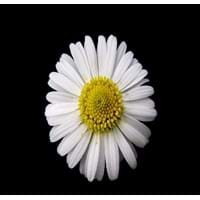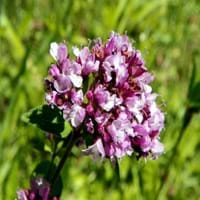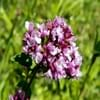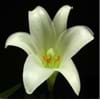Color
Orange, White, Yellow
Lavender, Orange, Purple, Red, White, Yellow
Color Meaning
Orange - Satisfaction and Passion, White - Purity and Innocence, Yellow - Happiness and Friendship
Orange - Satisfaction and Passion, Pink - Sensitivity and Love, Purple - Elegance and Pride, Unknown, Unknown, Unknown, Unknown
Fragrance
Aromatic
Aromatic
Line
Not Available
Not Available
Silhouette
Not Available
Not Available
Blossom Texture
Not Available
Not Available
Form
Not Available
Not Available
Sunlight
Full Sun
Full Sun
Watering
Enough
Diligently
Type of Soil
Well-drained
Loamy
Essential Fertilizers
Sulphur
Lime stone, Sulphur
Common Pests and Diseases
List of Pests
Aphids, Mites, Nematodes, Spider Mites, Thrips, Whiteflies
Unknown, Unknown, Unknown
List of Diseases
Alternia Leaf Spot, Bacterial leaf spot or blast, blight, Crown rot, Downy mildew, Powdery Mildew, Root Rot, Rust, Wilt
Unknown
Bloom Time
All Summer Season, Fall Season
All Summer Season, Fall Season, Spring Season
Origin
America, Australasia, Central Europe, Northern Europe, Western Europe
Africa, Asia, Europe, North America
Interesting Facts of
- Name "daisy" means "day's eyes" and when given to another person stands for transfer of secret from the giver to the receiver.
- Daisy opens the flower at dawn and closes it at night.
- The Rose comes in various colors, although a "black rose " is not literally black but a dark red.
- A single rose suggests utmost devotion while two rose entwined together says "Marry me".
Lifespan
Perennials - a plant that lives for three or more years
Annuals - complete its full life cycle in one growing season
Uses
Not Available
Not Available
Health Benefits
Best remedy for Cough & Cold, Cures Constipation, Cures Urinal tract inflammations, Good for liver and gallbladder, Good remedy for Diarrhea, Prevents Cystitis, Regulates the Menstruation cycle
Unknown, Unknown, Unknown, Unknown, Unknown, Unknown
Medicinal Uses
Acts as a antispasmodic, Acts as an anti-inflammatory, Natural Healer, Treats mouth sores
Unknown, Unknown
Culinary Uses
Used in salads, soups and sandwiches
Unknown, Unknown, Unknown, Unknown, Unknown, Unknown
Cosmetic Uses
Lightens the skin, Used as a by- product in fairness creams, Used in Perfumes
Best for Healing, Unknown, Unknown, Unknown, Used after facial and cleansing, Unknown, Unknown, Unknown
Occasional Uses
Father's Day, Thanksgiving Day
Anniversary, Valentine's Day, Wedding
Allergy
Asthma, Dark circles under eyes, Hayfever, Headache, Itching, Itchy eyes, Itchy throat, Persistent upward rubbing of nose, Red eyes, Runny nose, Sinus pain, Sneezing
Unknown
Scientific Name
Bellis perennis
Rosa
Sub kingdom
Tracheobionta
Tracheobionta
Super Division
Spermatophyta
Spermatophyte
Division
Magnoliophyta
Magnoliophyta
Order
Asterales
Not Available
Class
Magnoliopsida
Unknown
Family
Asteraceae
Not Available
Sub Family
Asteroideae
Not Available
Genus
Not Available
Not Available
Number of Species
Not Available
Not Available
Daisy and Marjoram color
Daisy and Marjoram come in variety of colors. Every color tells a different story. Let’s know about Daisy and Marjoram color meaning in this section. For example Red - Courage, Desire and Love, Pink - Sensitivity and Love,Yellow - Happiness and Friendship, Orange - Satisfaction and Passion, Purple - Elegance and Pride, Blue - Peace and Serenity, White - Purity and Innocence, Green - Prosperity and Optimism. Daisy is Tubular in shape and has Aromatic fragrance whereas Bowl shaped Marjoram has Aromatic fragrance.
More facts about Daisy and Marjoram
You must be eager to know more facts about Daisy and Marjoram. Did you know Daisy has originated in America, Australasia, Central Europe, Northern Europe, Western Europe while Marjoram has originated in Africa, Asia, Europe, North America. One of the Interesting Facts about Daisy and Marjoram is that they can survive almost in pots.
Daisy and Marjoram Uses
Benefits of flowers are universally known. Let’s know about Daisy and Marjoram uses in this section. Daisy and Marjoram have many medicinal properties. Besides, Daisy is given on special occasions like Father's Day, Thanksgiving Day whereas Marjoram on Anniversary, Valentine's Day, Wedding. Daisy and Marjoram also have many culinary benefits.
Learn about Daisy and Marjoram Family classification
Flowers classification makes their study easier. Plants sharing same association are grouped together. Let’s learn about Daisy and Marjoram Family classification here. Daisy and Marjoram belong to Plantae. They are further divided in Spermatophyta super division and Magnoliophyta division. This way, different flowers can be organized in a systematic format.





